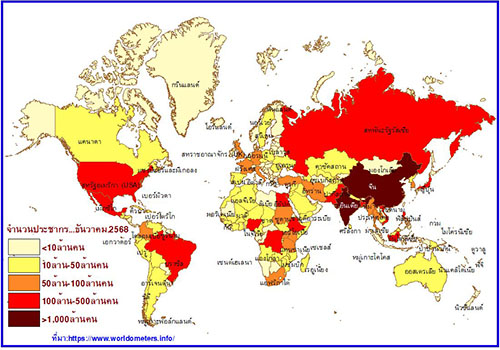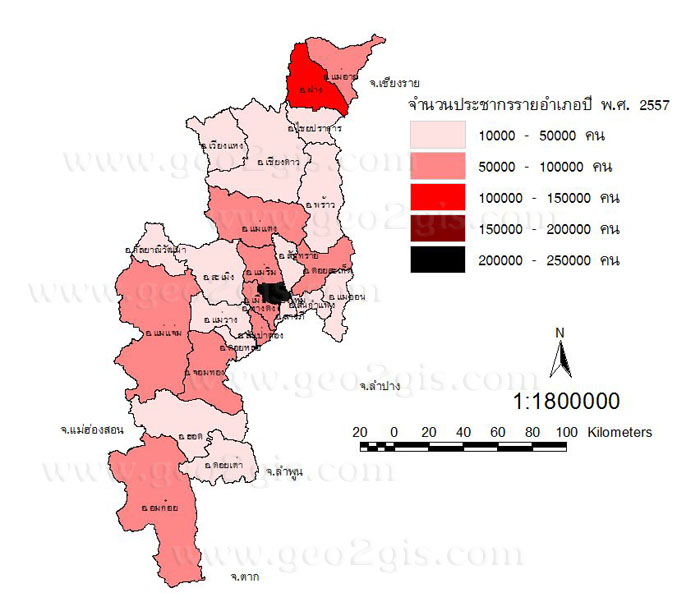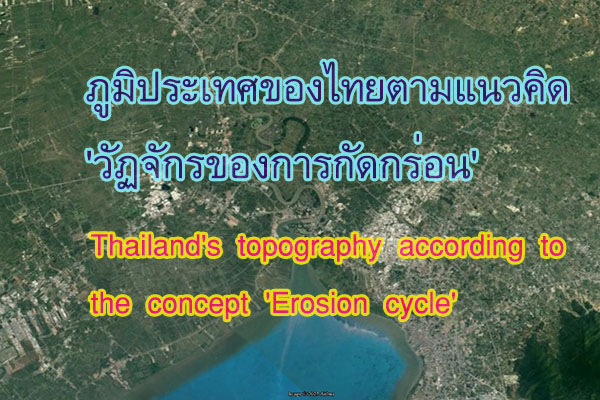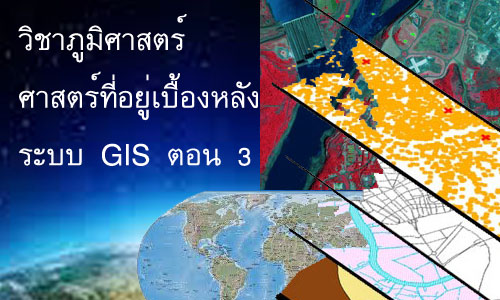ประเทศไทยแบ่งออกได้เป็น 3 ฤดู
Thailand's Three Seasons
1. ฤดูร้อน ระหว่างกลางเดือนกุมภาพันธ์ถึงกลางเดือนพฤษภาคม
Summer Season, From Mid-February to Mid-May

เป็นช่วงที่ขั้วโลกเหนือหันเข้าหาดวงอาทิตย์ บริเวณประเทศไทยจึงได้รับความร้อนจากดวงอาทิตย์เต็มๆ โดยเฉพาะช่วงเดือนเมษายนดวงอาทิตย์เกือบตั้งฉากในเวลาเที่ยงวันทำให้ร้อนจัด
The period when the Northern Hemisphere tilts toward the sun is characterized by intense heat in Thailand, particularly during April when the sun is nearly overhead around noon, resulting in scorching temperatures.

อย่างไรก็ตามบางช่วงที่มีมวลอากาศเย็นแผ่ลงมาจากประเทศจีนอาจทำให้เกิดการปะทะกันระหว่างมวลอากาศร้อนกับมวลอากาศเย็นทำให้เกิดพายุฝนฟ้าคะนองลมกระโชกแรงหรืออาจมีลูกเห็บตก แต่ก็อาจจะช่วงทำให้อุณหภูมิเย็นลงได้บ้าง
However, during certain periods, the intrusion of cool air masses from China may lead to clashes between warm and cool air masses, giving rise to intense thunderstorms, gusty winds, or even the possibility of hailstorms. Nevertheless, there are also intervals during which this interaction results in a decrease in temperature.
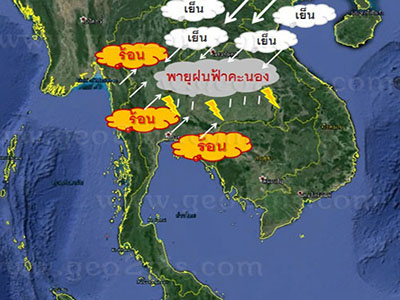
2. ฤดูฝน ระหว่างกลางเดือนพฤษภาคมถึงกลางเดือนตุลาคม
The Rainy Season, From mid-May to mid-October.
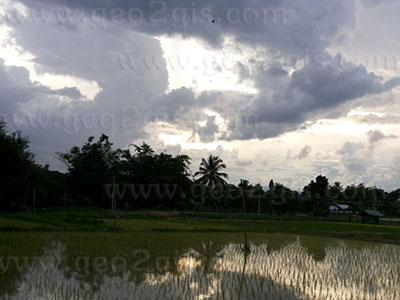
โดยประมาณกลางเดือนพฤษภาคมลมมรสุมตะวันตกเฉียงใต้ปกคลุมประเทศไทยทำให้มีเมฆมากและฝนตกชุกทั่วไป โดยเฉพาะบริเวณชายฝั่งทะเลและเทือกเขาด้านรับลม เนื่องจากลมมรสุมตะวันตกเฉียงใต้มีแหล่งกำเนิดจากบริเวณมหาสมุทรอินเดียทางซีกโลกใต้ พัดเอามวลอากาศชื้นข้ามเส้นศูนย์สูตรมาสู่ประเทศไทย มาพบกับร่องความกดอากาศต่ำที่พาดผ่านประเทศไทย
Around mid-May, the southwesterly monsoon prevails over Thailand, bringing extensive cloud cover and widespread rainfall, particularly along the coastal and mountainous regions facing the wind. Originating from the Indian Ocean on the southern hemisphere side, the southwesterly monsoon carries moist air masses across the equator to Thailand, where they meet low-pressure troughs passing through the country.
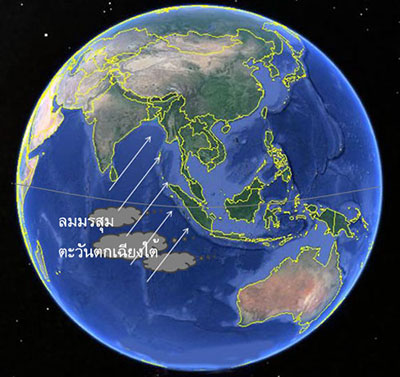
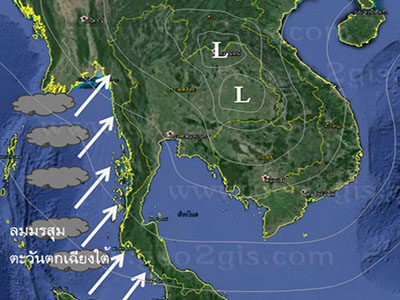
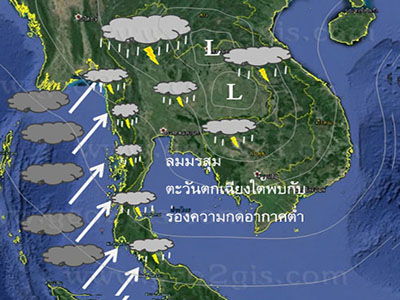
อย่างไรก็ตามในฤดูฝนปกติจะมีฝนทิ้งช่วงในช่วงประมาณปลายเดือนมิถุนายนเนื่องจากร่องความกดอากาศต่ำที่พาดผ่านประเทศไทยทางตอนใต้จะเลื่อนขึ้นไปทางเหนือเลยออกไปทางตอนใต้ของจีน หลังจากนั้นประมาณช่วงเดือนกรกฎาคมร่องความกดอากาศต่ำก็จะเลื่อนลงมาทางใต้ผ่านประเทศไทยอีกครั้งจึงทำให้มีฝนตกชุก
Nevertheless, during the normal rainy season, there is typically a rain lull around late June, as low-pressure troughs that initially pass through southern Thailand gradually shift northward and exit through the southern part of China. Subsequently, around July, another low-pressure trough descends southward through Thailand, resulting in a renewed period of heavy rainfall.
3. ฤดูหนาว ระหว่างกลางเดือนตุลาคมถึงกลางเดือนกุมภาพันธ์
Winter Season, from mid-October to mid-February.

โดยประมาณกลางเดือนตุลาคมลมมรสุมตะวันออกเฉียงเหนือจะพัดปกคลุมประเทศไทยแทนมรสุมตะวันตกเฉียงใต้ ซึ่งลมมรสุมตะวันออกเฉียงเหนือมีแหล่งกำเนิดจากบริเวณซีกโลกเหนือแถบประเทศมองโกเลียและจีนจึงพัดพาเอามวลอากาศเย็นและแห้งมาปกคลุมประเทศไทย
Around mid-October, the northeasterly monsoon, which brings winds from the northeast instead of the southwest, enveloped Thailand. Originating from the northern hemisphere, this northeasterly monsoon gathers cool and dry air masses from the regions near Mongolia and China, sweeping them across Thailand.

จึงเป็นช่วงเริ่มต้นของฤดูหนาว อากาศจะเริ่มเย็นและแห้งทางภาคเหนือและภาคตะวันออกเฉียงเหนือ สำหรับภาคกลาง ภาคตะวันออกลงมาอาจจะยังคงมีฝนฟ้าคะนองบ้าง แต่ภาคใต้จะมีฝนชุกโดยเฉพาะภาคใต้ฝั่งตะวันออก เนื่องจากลมมรสุมตะวันออกเฉียงเหนือจะพัดนำความชุ่มชื้นจากอ่าวไทยเข้ามาปกคลุม
Therefore, this signifies the beginning of winter. The air in the northern and northeastern regions starts to cool and become dry. The central region might have occasional thunderstorms, whereas heavy rainfall is predominant in the southern part, especially along the eastern coast. The northeasterly monsoon brings the moisture from the Gulf of Thailand, causing this.
การเข้าสู่ฤดูกาลที่ไม่เป็นไปตามช่วงเวลาปกติ
Entering a season that does not meet normal times.
อย่างไรก็ตาม ในแต่ละปี การเข้าสู่ฤดูกาลอาจจะไม่เป็นไปตามช่วงเวลาปกติ ด้วยสภาวะการเปลี่ยนแปลงอุณหภูมิของโลกที่อาจะเกิดขึ้นจากการกระทำของมนุษย์ที่เราเรียกว่า “โลกร้อน” หรือ “โลกเดือด” การเกิดปรากฏการณ์ “เอลนีโญ” “ลานีญา” ซึ่งทั้งหมดส่งผลให้ช่วงเวลาของการเกิดฤดูกาลของประเทศไทยเปลี่ยนแปลงไปอย่างเห็นได้ชัด โดยสังเกตุได้จากการประกาศเข้าสู่ฤดูต่าง ๆ ที่กรมอุตุนิยมวิทยาประกาศในแต่ละปี เช่น ในปี 2566 กรมอุตุนิยมวิทยาประกาศประเทศไทยเข้าสู่ฤดูร้อนตั้งแต่วันที่ 5 มีนาคม 2566 ซึ่งปกติฤดูร้อนจะเริ่มประมาณกลางเดือน กุมภาพันธ์ และกรมอุตุนิยมวิทยาประกาศเข้าสู่ฤดูหนาวตั้งแต่วันที่ 14 พ.ย. 2566”ซึ่งปกติฤดูหนาวจะเริ่มประมาณกลางเดือน ตุลาคม เป็นต้น
Nevertheless, factors like global warming and climate change, as well as phenomena like El Niño and La Niña, can disrupt Thailand's seasonal patterns. The Thai Meteorological Department announces the onset of each season every year. The Meteorological Department declared the beginning of summer in 2003 on March 5, which is later than the usual mid-February onset. Likewise, on November 14, 2003, the department declared the start of winter, which is usually around mid-October.







